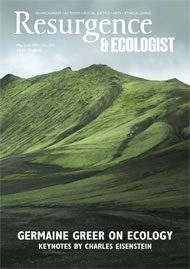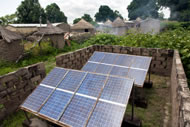The innovative World Future Council, in partnership with Japan’s Institute for Sustainable Energy Policies (ISEP) and eight other organisations from civil society, industry, policy and academia, have formed the first global campaign that advocates 100% renewable energy.
Anna Leidreiter, policy officer at the World Future Council in Hamburg, serves as the coordinator for the ‘Global 100% RE’ campaign. She explains, “The goal is to initiate a dialogue about 100% renewable energy and inform people about what’s happening all over the world, proving that 100% RE is viable.” Indeed it is, and it is already working: globally, with many countries now moving towards 100% RE. Denmark, Scotland, Iceland as well as countries particularly affected by climate change like the Maldives and Tuvalu are well on the way. “All these examples show that making the transition to 100% RE is a political – not technical – decision,” says Leidreiter. “The necessary technologies and knowledge are there.”
The 100% RE initiative is focused on changing this political mindset, so that renewable energy becomes “the new normal”. By drawing on existing examples of good practice from around the world, it aims to prove that renewable energy is achievable, affordable and a practical solution to climate change.
The community of Skellefteå in Sweden is one example of ambitious RE targets being set and met, with renewables already accounting for nearly 90% of its energy production. The municipally-owned renewable electricity producer is one of the major driving forces, having a social mandate above its commercial pursuits.
Perpignan Méditerranée in France is another inspiring example. The region in the nuclear dominated country is aiming to be the first urban territory in Europe to meet all its electricity needs through local RE projects; 75% of the region’s electricity needs are already met by renewable energy.
In Germany, a network of 100% RE regions includes 74 regions and municipalities that have already reached 100% renewable energy status. One of these is Jühnde, the first bioenergy village in Germany. Through its biogas plant, Jühnde produces twice the amount of electricity demanded by the local area and provides heat for 70% of the inhabitants. The initiative began with a public meeting in 2001 and citizen participation continues to be the driving force.
Case studies like these exist not only in Europe. The city of Greensburg in Kansas powers all local homes and businesses with 100% renewable energy, 100% of the time. It’s a story from tragedy to triumph: A tornado destroyed or damaged 95% of the town’s homes and businesses in May 2007. The community turned disaster into opportunity and created a vision to rebuild Greensburg as a sustainable community. Local wind-power, complemented by small solar installations and biogas, are the cornerstones of their master plan.
Similarly, local governments across Japan are seeking to supply their regions with 100% renewable energy. The Great East Japan earthquake, the subsequent tsunami and the disaster at the Fukushima Daiichi nuclear power plant in March 2011 encouraged the people of Fukushima to reassess their energy system and to revitalise industry in the shattered region. “This led to a vision to transition to renewable energy as a pathway forward,” says Tetsunari Iida, Executive Director of the Institute for Sustainable Energy Policies. Fukushima prefecture now has an official commitment to cover 100% of primary energy demand in Fukushima with renewable resources by 2040. The implementation of feed-in tariffs in 2012 triggered the acceleration of renewable energy development in many areas in Japan.








